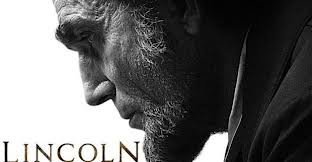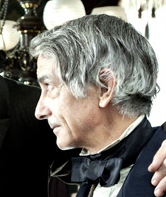 The main narrative of Steven Spielberg’s “Lincoln” movie opens with a dream that Abraham Lincoln describes to Mary Lincoln in early January 1865. This is historical in nature, but not true in every respect. The story of Lincoln’s dream derives not from Mary Lincoln’s papers, but rather from an account that appears in the diary of Gideon Welles, who served as Lincoln’s secretary of navy. His entry, dated April 14, 1865 (but written afterward) describes the president telling his cabinet officers on the day that he was assassinated of a dream where “he seemed to be in some singular, indescribable vessel, and that he was moving with great rapidity towards an indefinite shore.” He claimed that he had this dream before “nearly every great and important event of the War.” Tony Kushner’s script alters the language of this account and puts it into an exchange between husband and wife preceding a “revelation” about his intention to fight for passage of an amendment to abolish slavery during the January 1865 lame duck session of Congress. Mary Lincoln (Sally Fields) acts shocked by this news and argues against it, saying to her husband:
The main narrative of Steven Spielberg’s “Lincoln” movie opens with a dream that Abraham Lincoln describes to Mary Lincoln in early January 1865. This is historical in nature, but not true in every respect. The story of Lincoln’s dream derives not from Mary Lincoln’s papers, but rather from an account that appears in the diary of Gideon Welles, who served as Lincoln’s secretary of navy. His entry, dated April 14, 1865 (but written afterward) describes the president telling his cabinet officers on the day that he was assassinated of a dream where “he seemed to be in some singular, indescribable vessel, and that he was moving with great rapidity towards an indefinite shore.” He claimed that he had this dream before “nearly every great and important event of the War.” Tony Kushner’s script alters the language of this account and puts it into an exchange between husband and wife preceding a “revelation” about his intention to fight for passage of an amendment to abolish slavery during the January 1865 lame duck session of Congress. Mary Lincoln (Sally Fields) acts shocked by this news and argues against it, saying to her husband:
“No one’s loved as much as you, no one’s ever been loved so much, by the people, you might do anything now. Don’t, don’t waste that power on an amendment bill that’s sure of defeat.”
Yet in reality, Lincoln had already made public his plans to push for a January vote. His annual message to Congress in December 1864 following landslide election victories for the Republican / Union party predicted with great confidence that “the next Congress will pass the measure [abolishing slavery] if this does not” and so suggested that since there was “only a question of time as to when the proposed amendment will go to the States” why “may we not agree that the sooner the better?” The tone of this passage is almost taunting. This is precisely how “artistic license” works in Hollywood movies. Filmmakers must establish compelling conflicts at the outset and then work to resolve them with a suspenseful plot that also reveals the essential nature of their main characters. History is messier. So, even though the initial scene establishing the fundamental premise of this movie is full of interesting and historically-minded word choices (Daniel Day-Lewis as Lincoln subtly quotes Shakespeare by calling himself a “king of infinite space” and uses very Lincolnian-sounding phrases such as “flubdubs” and “shindy”) the gist of the scene conflates and confuses some of the fundamental political realities of that moment.
The movie actually conflates or pushes together several political conflicts from the end of the war that historians usually treat separately. There were deep divisions, for example, within the Republican Party during the 1860s, traditionally identified as a split between Radicals and Conservatives (though many historians object to these broad categories), but those factions were not arguing over abolition by January 1865 as the movie depicts in its opening scenes. The early scenes that show figures such as Secretary of State William Henry Seward, Republican Party elder statesman Francis Preston Blair, Sr., and Radical congressmen James Ashley and Thaddeus Stevens in conversation with each other and the president, take a number of critical liberties to help make complicated partisan in-fighting seem more understandable for a modern movie audience.
First and most important, nobody would have been surprised by the President’s support for a January vote on the constitutional amendment. He had already announced it publicly in December. Second, the greatest cause of division among Republicans in early 1865 was over Reconstruction policy, not abolition, with Blair and other conservative figures arrayed against radicals such as Ashley and Stevens, over questions regarding not only the future of ex-slaves but also ex-Confederates. The radicals, especially Stevens, wanted a social revolution in the South. The conservatives preferred national reconciliation even at the cost of social change. The question of exactly where Lincoln and Seward stood in this reconstruction debate (and in relation to each other) remains a topic of disagreement among historians. But the idea that Seward would lecture Lincoln on Republican party divisions (Scene 4) or that the president would be forced to defend his wartime emancipation policy in early 1865 against vigorous objections from some of his cabinet (Scene 7) is almost absurd.
 Consider this incongruity: in the movie, Seward (David Strathairn) asks Lincoln, “since when has our party unanimously supported anything?” and yet the correct historical answer to that question is simply the last time the abolition amendment appeared in the House (June 1864) when the ONLY Republican to vote against it was Rep. James Ashley, the sponsor, who did so on technical grounds so that he could bring it back later for reconsideration. By the end of the war, Republicans supported the abolition of slavery –it was a central plank of their party platform in the 1864 election and part of the basis for their landslide victories in November. Border states such as Maryland and Missouri were already in the process of abolishing slavery on their own –with full Republican support. Montgomery Blair had been “pushed out” of the president’s cabinet in September 1864 as part of a deal with radicals –as the movie suggests– but Preston Blair (Hal Holbrook) surely never told Lincoln, as he does in the film: “We can’t tell our people they can vote yes on abolishing slavery unless at the same time we can tell ‘em that you’re seeking a negotiated peace.” It’s not even entirely clear that the elderly and highly controversial Blair had any “people” left in the House now that his other son Frank (Francis Preston Blair, Jr.), a former congressman, was back in the Union army.
Consider this incongruity: in the movie, Seward (David Strathairn) asks Lincoln, “since when has our party unanimously supported anything?” and yet the correct historical answer to that question is simply the last time the abolition amendment appeared in the House (June 1864) when the ONLY Republican to vote against it was Rep. James Ashley, the sponsor, who did so on technical grounds so that he could bring it back later for reconsideration. By the end of the war, Republicans supported the abolition of slavery –it was a central plank of their party platform in the 1864 election and part of the basis for their landslide victories in November. Border states such as Maryland and Missouri were already in the process of abolishing slavery on their own –with full Republican support. Montgomery Blair had been “pushed out” of the president’s cabinet in September 1864 as part of a deal with radicals –as the movie suggests– but Preston Blair (Hal Holbrook) surely never told Lincoln, as he does in the film: “We can’t tell our people they can vote yes on abolishing slavery unless at the same time we can tell ‘em that you’re seeking a negotiated peace.” It’s not even entirely clear that the elderly and highly controversial Blair had any “people” left in the House now that his other son Frank (Francis Preston Blair, Jr.), a former congressman, was back in the Union army.
More important, the so-called Conservative Republicans were not in any sense the obstacle to passage of the amendment. The challenge for the amendment’s backers was to win over Democratic votes, presumably lame duck Democratic votes –not hold together Republicans (at least not on this question). Finally, it’s worth noting that the curious scene involving the White House visit from Mr. and Mrs Jolly of Jefferson City, Missouri is wholly invented (Scene 5). Even their congressman –”Beanpole” Burton– is fictional. This is a perfectly fair use of artistic license, because the imaginary conversation reveals the complicated –and quite real– ambivalence of many Unionists regarding the future of race relations after slavery, but it does seem like a strange choice for filmmakers when there was an important Missouri Unionist congressman named James S. Rollins, whom Lincoln did personally lobby to support this amendment. Why Rollins gets omitted from the movie is difficult to explain.
(This post has been excerpted from a longer essay, “Warning: Artists at Work,” that appears in “The Unofficial Guide to Spielberg’s Lincoln” which is part of the House Divided Project’s new Emancipation Digital Classroom).
Images courtesy of Dreamworks








Related Articles
No user responded in this post
Leave A Reply
Please Note: Comment moderation maybe active so there is no need to resubmit your comments